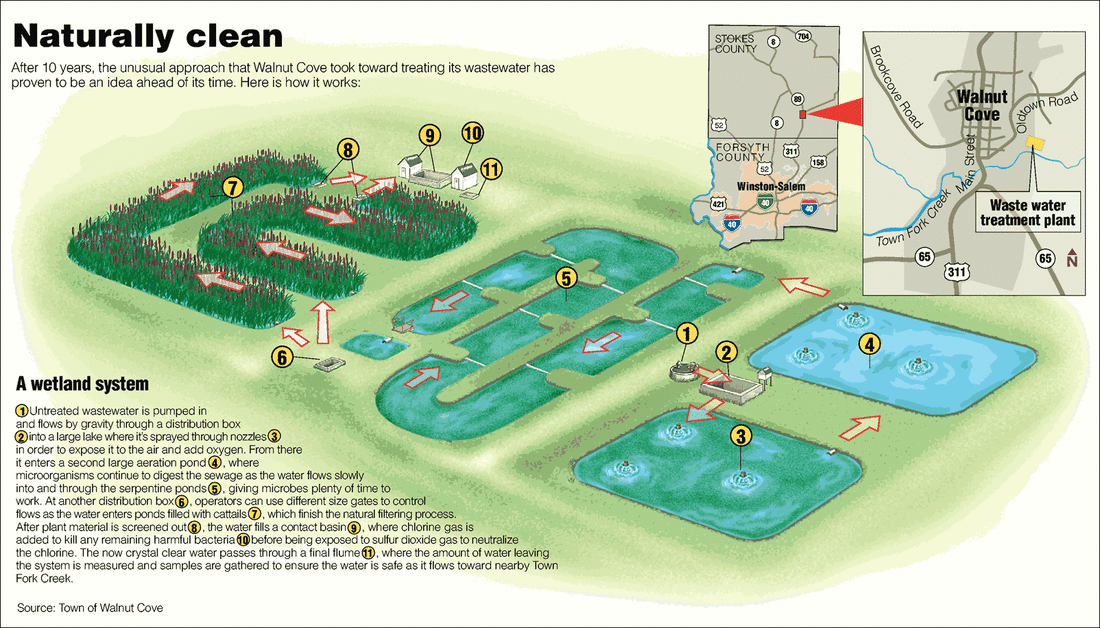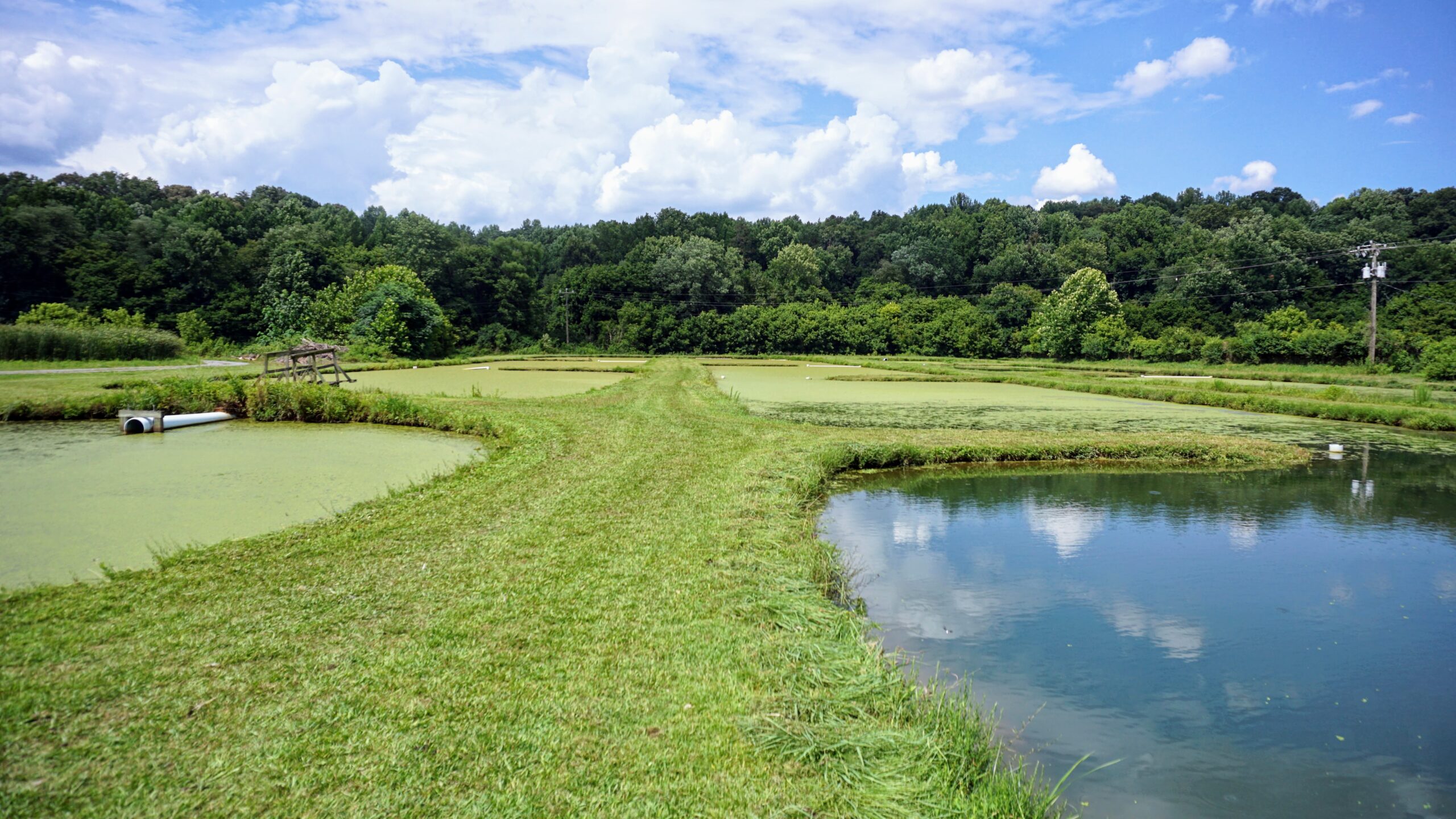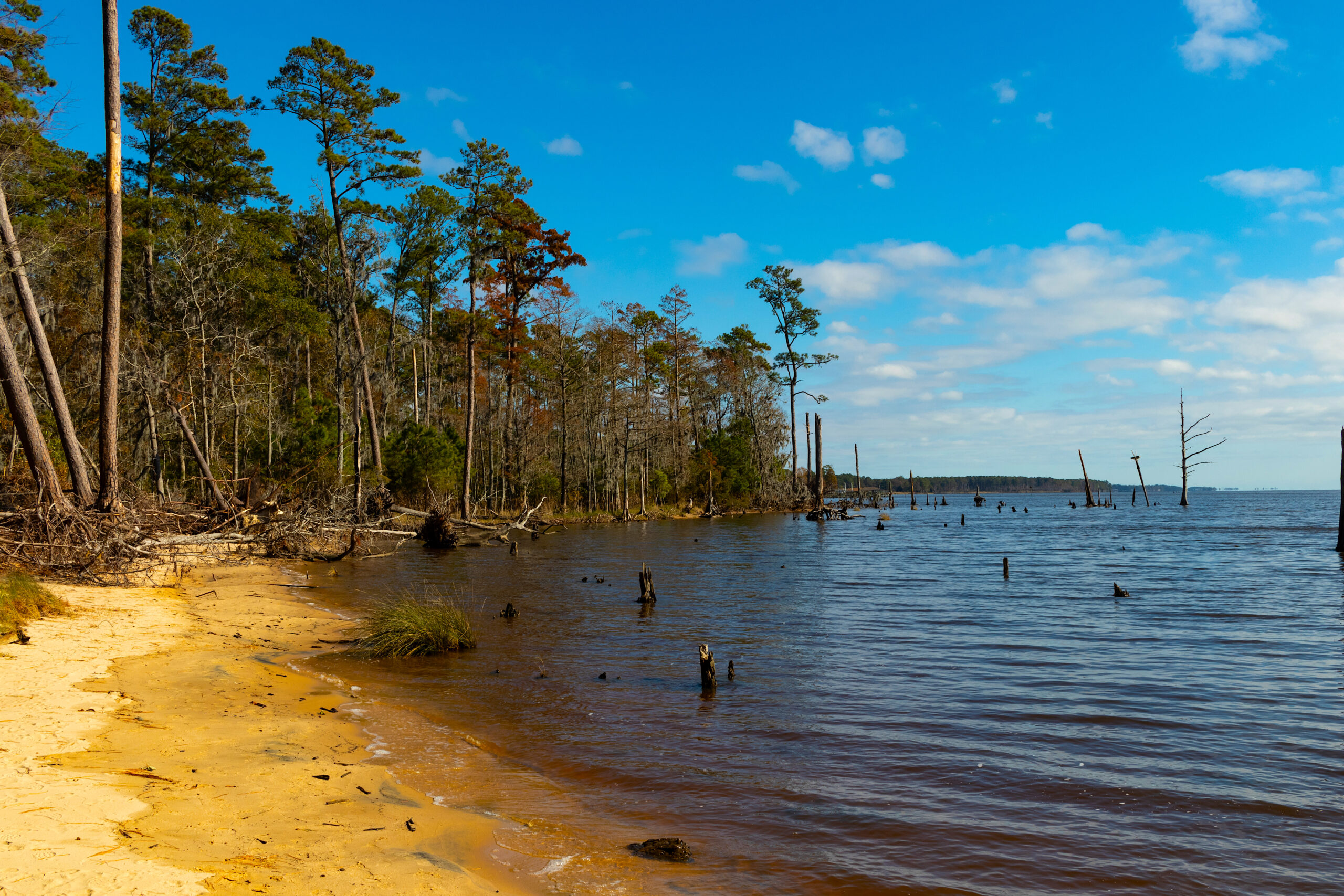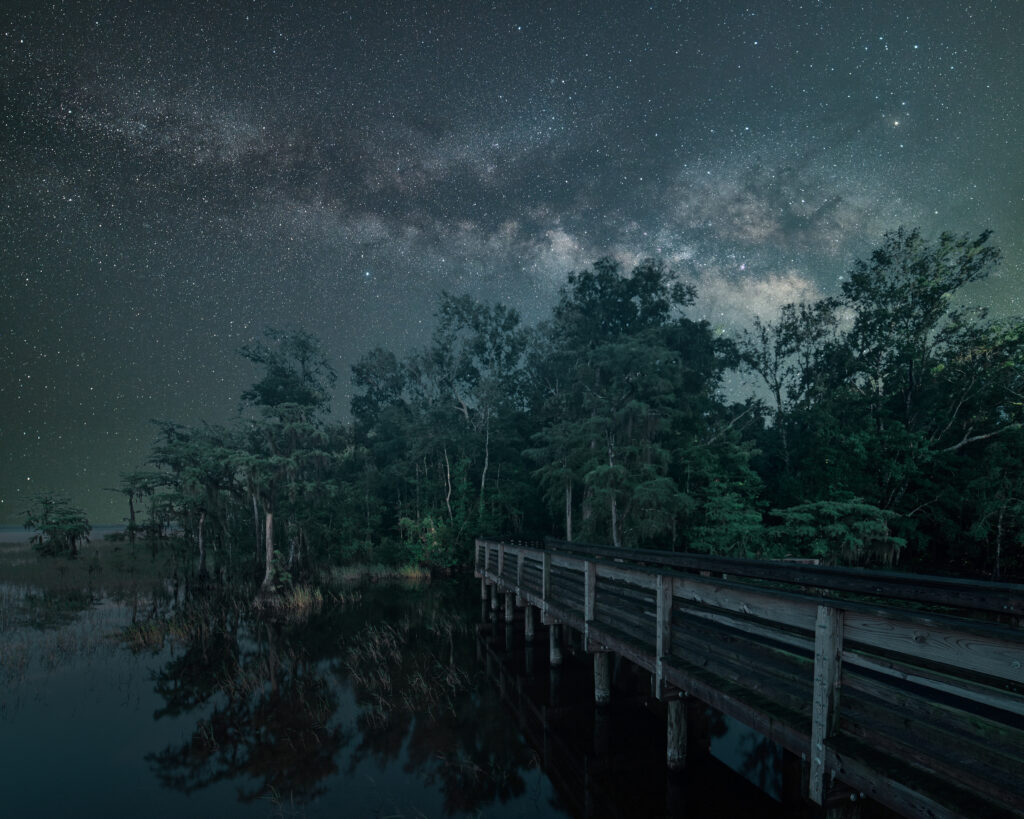NC WRRI Fellow Finds Promise in Sunlight

Above: Arpit Sardana collects samples at a wetland site at the Neuse River Resource Recovery Facility (NRRRF) of Raleigh, to test in the laboratory.
Arpit Sardana, one of the 2019-20 Urban Water Consortium/NC Water Resources Research Institute graduate student researchers, spent his fellowship season testing out an idea so simple, it might prove revolutionary: The idea that sunlight can break down some of the stubborn contaminants that conventional wastewater treatment cannot remove. Specifically, he researches the potential of photodegrading emerging contaminants in treatment wetlands and surface waters.
Sardana, a recent North Carolina State University doctoral graduate, says that part of his interest in the topic stemmed from the fact that the field of photochemistry was new to him and had great potential for new research.
“Engineers are always looking for novel processes to solve big problems, like the presence of pharmaceuticals and other microcontaminants in our waters,” he explains. It turned out that researchers had only recently started looking at natural photochemical processes in wastewater treatment. In other words, most wastewater treatment researchers had been ignoring the role of one of the most basic natural phenomena: sunlight.
In his research, Sardana focused on the photoreactivity of certain contaminants in a constructed wetland site, where untreated wastewater flows through lagoons and vegetated wetlands, instead of through the highly engineered physical and biological processes of a traditional wastewater treatment plant. Sardana has been analyzing samples collected from the constructed wetland site operated by the Town of Walnut Cove, North Carolina.

Promising Chemistry
A variety of chemicals end up in wastewater, such as cleaning solvents, pharmaceuticals and personal care products. These chemicals need to be removed before wastewater is released back into the environment, because of their potential for adverse effects on our ecosystem and human health. However, conventional wastewater treatment plants do not remove all trace chemicals and some of the more difficult-to-remove chemicals can persist downstream. Is it possible for a process like sunlight-driven photodegradation to meaningfully degrade these stubborn trace pollutants? Can it provide a promising natural solution for improving water quality?
“We know that photodegradation reactions occur,” Sardana says. “Now we need to know how fast these reactions occur and how we can engineer processes to make use of natural photochemistry. Lab experiments can help to answer these questions.”
In his research, Sardana has characterized the photochemical behavior of wastewater treated from lagoons, ponds, vegetated wetland cells and conventional wastewater treatment processes. Sardana’s research has shown that contaminant photodegradation relies on a complex interplay of sunlight and the dissolved organic matter (DOM) found in waters. The DOM in different waters can be characterized like a fingerprint, and wastewater has a different DOM “fingerprint” than water in a wetland or a lake.
“We have instruments and analytical methods to characterize the DOM of a sample. These techniques are essential to my research, because the DOM fingerprint of wastewater changes as it flows through different stages of its treatment journey,” Sardana explains.
Sardana’s research found that pharmaceutical photodegradation rates were lower in vegetated wetland cells than lagoons, ponds and wastewater effluents. Samples from the wetland site that looked more like untreated wastewater (i.e. prior to exposure to wetland vegetation) were quite effective at degrading the tested pharmaceuticals. Sardana explains that antioxidants from plants in the vegetated cells diminished the efficiency of photodegradation reactions. The wastewater-like DOM absorbed light efficiently and generated highly reactive intermediates that could relatively rapidly degrade the contaminants, he adds.

Sunlight for Treatment
“Arpit’s research is very exciting!” says Dr. Tarek Aziz, Sardana’s advisor and faculty member in NC State’s Department of Civil, Construction and Environmental Engineering. “He has developed some important new insights into why some waters are more ideal for photodegradation. With this knowledge, we are taking a significant step towards helping engineers design sustainable, naturally inspired systems that can take advantage of photodegradation to treat emerging contaminants.”
Sardana envisions that treatment wetlands can, in the future, work in tandem with conventional wastewater treatment plants to produce cleaner water, at a lower cost. While constructed wetlands are already in use across the world, they are not presently designed with photodegradation in mind. Future applications of this research could see untreated or partially treated wastewater pass through shallow, open ponds to take advantage of the optimal conditions for dissolved organic matter for enhanced photodegradation of contaminants.

A Future Research Trajectory
Thanks to his WRRI fellowship and other research he has done for his doctorate, Sardana has developed a keen interest in studying unique environmental processes, which are at the intersection of environmental science and engineering.
“I want to develop a career as a professional engineer who values the intricacies involved in environmental processes and incorporates them to design sustainable and innovative solutions,” he says.
Sardana successfully defended his doctoral dissertation in March 2021 and is excited to finalize the peer-reviewed publication of his work in the coming months. His dissertation investigates the different reactions between sunlight and DOM, with an overall objective of efficiently photodegrading contaminants and improving water quality.
“I am sure that sunlight has a crucial role to play all over the world in improving water quality,” he says.
The WRRI Experience
Sardana says he definitely benefitted from not only his Graduate Research Fellowship from WRRI, but also from the connection to WRRI. His advisor, Tarek Aziz, has been partnering with WRRI for 10 years and was able to introduce Sardana to all WRRI has to offer.
“It’s an organization that’s very friendly and dear to all water professionals in North Carolina. WRRI has supported researchers financially and through networking opportunities. I attended the 2018 and 2019 Annual Conferences and was pleased to share my research at the poster presentation sessions,” Sardana says.
“Being awarded a WRRI graduate fellowship was a great achievement during my graduate school experience at NC State.”



